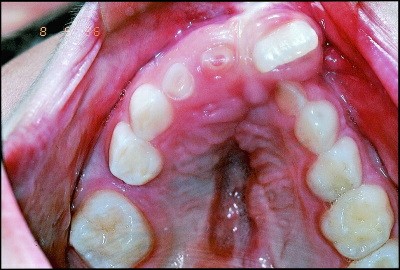Cleft lip and palate are among the most common congenital conditions affecting children worldwide. These conditions occur during early fetal development when the tissues that form the lip and palate do not fully fuse, leading to a gap or opening.
While surgical interventions have significantly improved over the years, individuals born with cleft lip and palate still face unique challenges, particularly in dental care.
Understanding the Challenges:
Dental Development:
One of the primary challenges associated with cleft lip and palate is dental development. The cleft can affect the normal growth and alignment of teeth, leading to issues such as missing, malformed, or displaced teeth.
Additionally, the cleft can create difficulties in the eruption of teeth, causing them to come in at irregular angles or positions.
Oral Hygiene:
Maintaining good oral hygiene is essential for everyone, but it can be particularly challenging for individuals with cleft lip and palate. The presence of a cleft can make it harder to clean the teeth and gums effectively, increasing the risk of dental caries, gum disease, and other oral health problems.
Speech and Feeding:
Cleft lip and palate can also impact speech and feeding abilities. These challenges may necessitate specialized feeding techniques during infancy and early childhood. Additionally, speech therapy may be required to address articulation and resonance issues that can arise due to the cleft.
Solutions for Dental Care:
Multidisciplinary Approach:
Effective dental care for individuals with cleft lip and palate often requires a multidisciplinary approach involving various healthcare professionals, including pediatric dentists, orthodontists, oral surgeons, speech therapists, and prosthodontists.
This team-based approach ensures that all aspects of the individual’s oral health and development are addressed comprehensively.
Early Intervention:
Early intervention is crucial in managing dental issues associated with cleft lip and palate. Dental professionals should closely monitor the dental development of children with clefts from infancy through adolescence.
Interventions such as orthodontic treatments, dental restorations, and surgical procedures may be recommended at different stages of development to optimize oral health outcomes.
Customized Treatment Plans:
Each individual with cleft lip and palate presents with unique dental challenges. Therefore, treatment plans should be tailored to address their specific needs and goals. This may involve a combination of orthodontic interventions to align teeth, surgical procedures to repair the cleft and improve facial aesthetics, and ongoing dental care to maintain oral health.
Patient Education and Support:
Education and support play a crucial role in empowering individuals with cleft lip and palate to manage their oral health effectively. Dental professionals should provide guidance on proper oral hygiene techniques, dietary habits, and lifestyle factors that can impact oral health.
Additionally, offering emotional support and connecting patients with support groups or counseling services can help them cope with the psychosocial aspects of living with a cleft.
Cleft lip and palate present unique challenges in dental care, ranging from dental development issues to oral hygiene difficulties and speech impairments. However, with a comprehensive and multidisciplinary approach, these challenges can be effectively managed.
Early intervention, customized treatment plans, patient education, and support are key components of successful dental care for individuals with cleft lip and palate.
By addressing these challenges proactively, dental professionals can significantly improve the oral health and overall quality of life for individuals living with these conditions.
